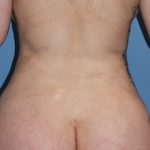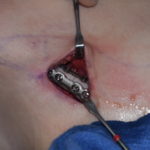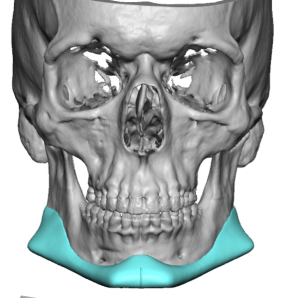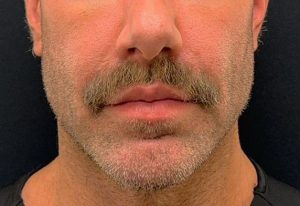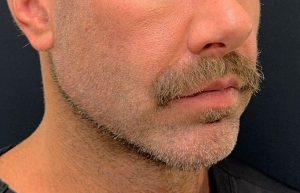Background
Jaw augmentation is a common request among men seeking a stronger, more defined jawline. While options such as injectable fillers and standard chin or jaw angle implants are available, the most effective technique is a custom jawline implant. Thanks to its continuous and individualized design, this implant provides the most noticeable distinction between the face and neck by expanding the entire inferolateral border of the mandible.
A one-piece implant is ideal, but this is only possible with a semi-rigid material that offers natural flexibility—such as solid silicone. Other implant materials require segmentation into multiple pieces for insertion and reassembly within the subperiosteal pocket above the bone. Even with silicone, a one-piece design is only feasible if the jaw angle portion is not excessively large.
When designing the jaw angle section of a custom jawline implant, most men prefer a sharper, angular appearance. This is achieved by creating a concave frontal profile to counter the bulk of the masseter muscle. However, some men desire a rounder jaw angle, which requires a convex frontal profile and implant extension higher into the muscle fossa. Incorporating this into a single implant makes it too large to insert as one piece. An effective solution is to add an overlay implant to the jaw angle portion.
Case Study
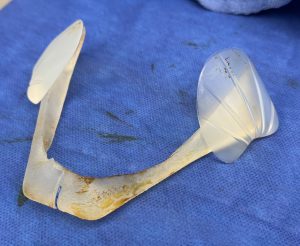
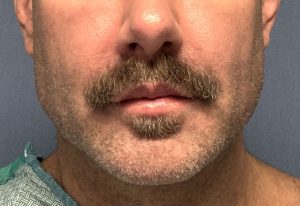
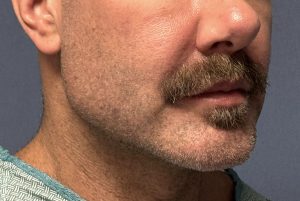
Discussion
The jaw angle is a complex augmentation area that is often underappreciated. On X-rays or anatomic models, it may appear as a flat structure defined by its gonial angle and thickness. However, 3D CT scans reveal that the jaw angle has a concave surface accommodating the masseter muscle belly (the muscle fossa). The surrounding anatomy includes the raised posterior and inferior borders, as well as the external oblique line anteriorly.
-
A more angular jaw angle is achieved by placing implant bulk along the posterior and inferior borders while avoiding the muscle fossa.
-
A rounder angle requires augmentation into the muscle fossa, which cannot be accomplished with a single one-piece custom implant.
Extending a custom implant fully into the muscle fossa carries a high risk of nerve injury, particularly to the mental nerve during insertion. A safer and more effective strategy is to use an overlay implant, placed through the intraoral incision. Temporal implants are well-suited for this purpose since they are soft, fit naturally into the bony fossa, and can be secured with screw fixation if needed.
Key Points:
-
A custom jawline implant is the most effective method of lower facial augmentation due to its wraparound design.
-
The limitation of a one-piece implant lies in the size of the jaw angle portion.
-
For patients desiring a rounder jaw angle, a muscle implant overlay (such as a temporal implant) can be combined with the custom jawline implant.
Dr. Barry Eppley
World-Renowned Plastic Surgeon

